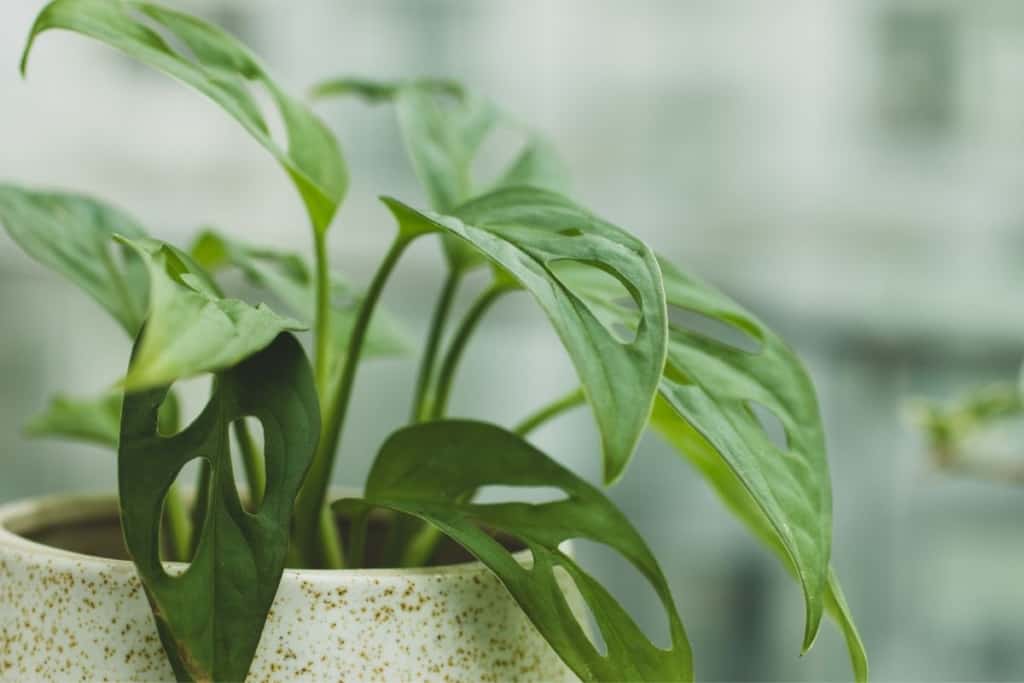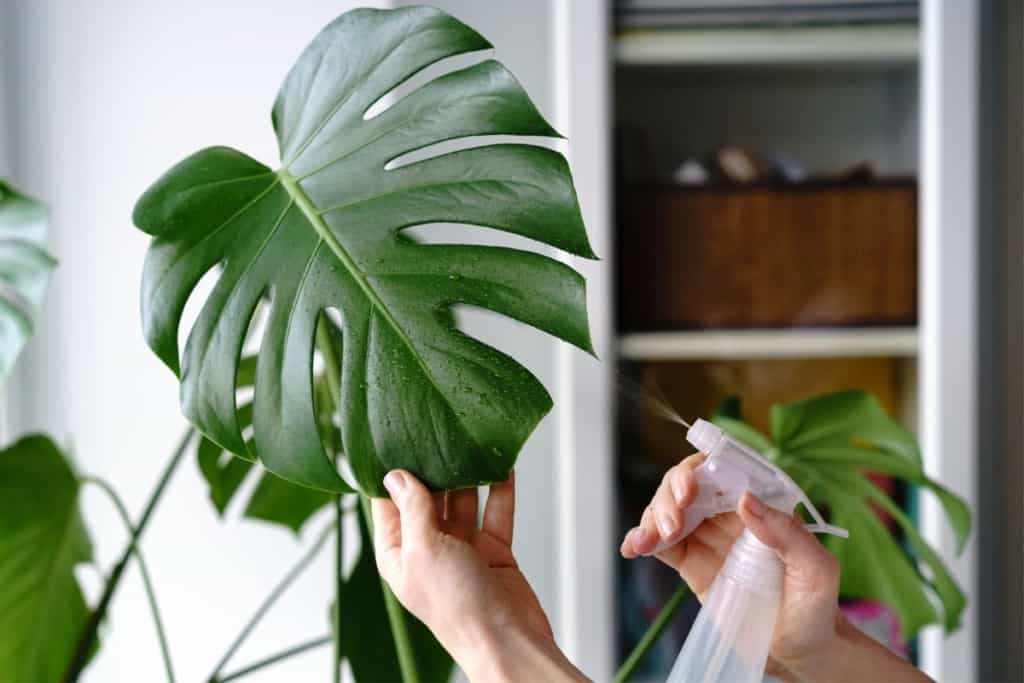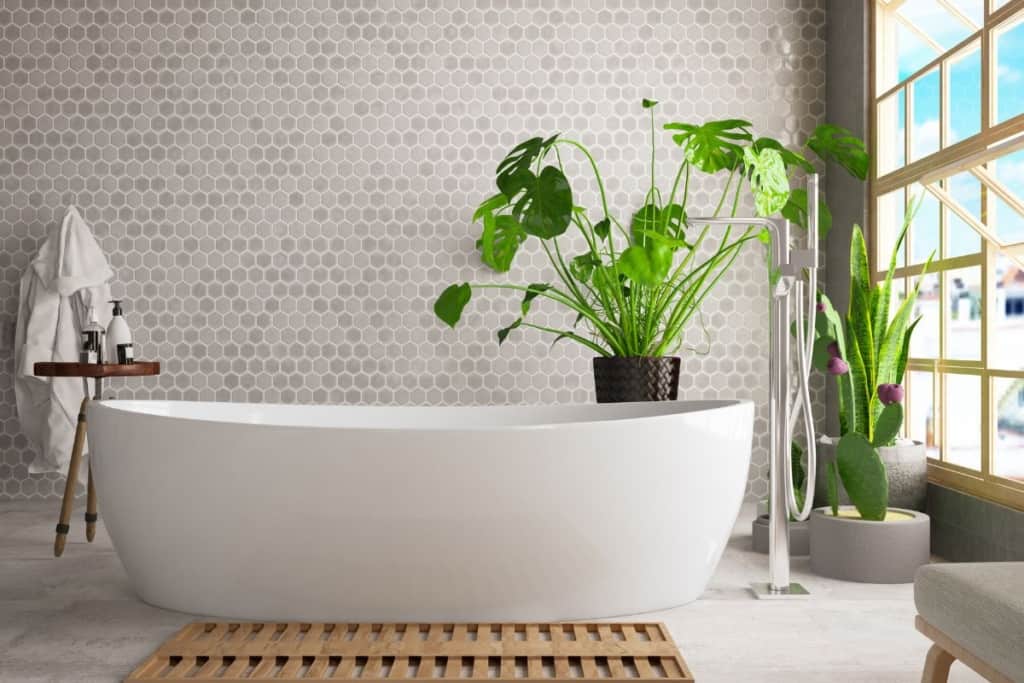Do you have a Monstera Plant in your home or office and want to know if it likes humidity? You’ve come to the right place! In this article, I’ll explain why high humidity is important for Monstera Plants so that they can thrive.
Monstera Plants are tropical plants native to Central America and South America, but they’re popular all over the world as decorative houseplants. Their unique leaves with their large holes, also known as fenestrations, make them stand out from other plants. Because of where they originate from, these plants need certain environmental conditions in order to stay healthy and happy.

One of those conditions is high humidity; the more humid an environment is, the better off your Monstera Plant will be. So how do you create a favorable environment for your Monstera Plant? By understanding what makes up good humidity levels for your plant and then following some simple steps you can keep your plant looking its best. Let’s dive into the details now!
Contents
Measuring Humidity
Measuring humidity is essential for those who want to ensure their Monstera plants thrive. It’s important to understand that the right amount of moisture in the air can make or break your plant’s growth and health. You may be asking yourself, “What is adequate humidity?” The short answer is that it depends on the type of environment you are providing your plant with.
Humidity level refers to how much water vapor is present in a given space. Generally speaking, Monstera plants prefer humid environments which means keeping an eye on the relative humidity levels inside your home where they live. This will help determine if you have enough moisture in the air for them to stay healthy. Different types of climates require different levels of humidity—arid climates need more humidity than tropical ones do—so it’s important to research what kind of conditions work best for your particular species before making any decisions about adding extra moisture to its surroundings.
It’s also vital to remember that not all areas within our homes provide ideal conditions for houseplant growth; some rooms may be too dry while others may be too wet due to improper ventilation or other factors like weather patterns outside our doors. To keep these issues from affecting your Monstera plants, consider investing in a hygrometer so you can easily monitor and adjust the humidity environment as needed. This way, you’ll always know whether or not there’s enough moisture in the air around them!
- Face Icon Comfort Indicator
- Highly Accurate Sensors
- Fast Refresh Rate
- Compact Display with Large Digits
- Multiple Placement Options - Tabletop Stand / Magnetic Back / Hanging Mount
Knowing when and how often to check your houseplants’ humidity can save time and energy down the line by eliminating guesswork and ensuring optimal growing conditions at all times. Whether through manual checking or using specialized equipment, monitoring this aspect of care should become part of your routine when caring for Monsteras!
Do Monstera Plants Like Humidity?

Do you have a Monstera plant in your home and are wondering if it likes the humidity? Or maybe you’re considering getting one, but aren’t sure about its preferences for moisture. Well, I’m here to tell you that yes, Monsteras do love a little extra humidity!
These plants are native to tropical rainforest climates with high levels of indoor humidity. Generally speaking, they prefer an indoor humidity level of around 80%. This is typically higher than what most homes naturally have indoors. So if you want to give them their ideal conditions, then increasing the air’s moisture can help.
You’ll know when your Monstera leaves are happy; they will be bright green and glossy looking with no brown tips or spots. To achieve this look, it may take some trial and error as different parts of your house may read differently on your hygrometer (that measures the amount of moisture in the air). Allowing your Monstera to experience these humid forest conditions every once in a while could be just what it needs!
To maintain healthy Monstera plants at home, monitor their environment regularly and keep track of how much additional moisture they need from misting or other means. If done correctly, you’ll find yourself enjoying lush greenery all year round!
Signs Of Low Humidity In Monstera

Monstera plants are tropical plants that thrive in warm and humid environments. They require a certain level of humidity to grow and stay healthy. When the humidity level in the environment is low, Monstera plants can start to show signs of stress and damage. Here are some signs of low humidity in Monstera plants:
Dry or Brown Edges
When the air is too dry, the edges of the Monstera’s leaves can turn brown or dry out. This can be especially noticeable on the younger leaves. The dryness can spread to the entire leaf and can eventually cause the leaf to wilt and fall off.
Leaf Dropping
One of the most common signs of low humidity is leaf drop. Monstera plants will shed their leaves if they are not getting enough moisture. The plant will sacrifice the leaves to conserve water and prevent further damage.
Stunted Growth
Monstera plants grow fast in their natural environment, but if the humidity is too low, their growth can be stunted. The leaves may become smaller than usual, and the plant may not produce new leaves.
Yellowing Leaves
When the humidity level is low, Monstera plants may develop yellow or pale leaves. This is due to the lack of moisture in the air and soil, which causes the plant to struggle to absorb the necessary nutrients.
Pests and Diseases
Low humidity levels can also make Monstera plants more susceptible to pests and diseases. Mites and spider mites, for example, thrive in dry environments and can quickly infest a plant that is not getting enough moisture.
Curling Leaves
Another sign of low humidity is the curling of the Monstera’s leaves. This is due to the plant’s attempt to conserve moisture by reducing the surface area exposed to the dry air.
Monitoring the humidity level in your Monstera plant’s environment is crucial to its health and growth. The signs of low humidity can be damaging and, if not addressed, can lead to the plant’s eventual death. It is important to provide your Monstera with the right level of humidity to keep it thriving and healthy.
5 Ways To Increase Humidity For Monstera Plants
If you’re looking for ways to increase the humidity levels for your Monstera plant, you’ve come to the right place. Caring for Monstera plants requires attention to their moisture level and humidity requirements.
Fortunately, there are several easy steps you can take at home that will help keep your Monstera healthy and happy. Here are five of them:
Misting

Misting your Monstera plant is one of the easiest and most effective ways to increase humidity. You can use a spray bottle to mist the leaves, making sure to cover them evenly. Do this at least once a day, or as often as needed, depending on the humidity level in your home.
Humidifier
A humidifier is a device that adds moisture to the air, making it a great solution for increasing humidity levels in your home. You can place a humidifier near your Monstera plant to maintain the ideal humidity level, which is around 60-70%.
Pebble tray
A pebble tray is a simple and inexpensive way to increase humidity. Fill a shallow tray with pebbles and add water until the pebbles are partially submerged. Place your Monstera plant on top of the pebbles, making sure the roots don’t touch the water.
Grouping plants
Grouping plants together is another effective way to increase humidity. Plants release moisture through a process called transpiration, and when several plants are grouped together, they create a humid microclimate.
Plant room
Creating a plant room is an excellent way to increase humidity levels in your home. You can create a dedicated space for your Monstera plant and other tropical plants, which will help maintain high humidity levels.
No matter how dry it may get inside during summer months—there’s always something you can do to make sure proper amounts of humidity are being maintained within your space so don’t worry about not knowing what else to do beyond basic watering routines anymore; now you know exactly what needs doing next whenever those pesky low-humidity problems arise again!
Frequently Asked Questions
Do Monstera plants like to be misted?
Yes, Monstera plants do like to be misted. Misting helps to increase the humidity around the plant and will keep the leaves looking fresh and vibrant. Misting is especially beneficial during the drier months of the year, when the air is more likely to be dry. Misting can also help to deter pests, such as spider mites, which can be a common problem for Monstera plants.
When misting your Monstera, make sure to use lukewarm water and only mist the leaves, avoiding the stem and soil. It is best to mist the plant once or twice a week, but if the air is particularly dry, you may want to mist more frequently.
Can I keep Monstera in the bathroom?

Yes, you can keep a Monstera plant in the bathroom. Bathrooms are typically humid places due to the water used for showers and baths, which creates a great environment for Monstera plants. In fact, bathrooms can be one of the best places to keep a Monstera plant as long as there is enough natural light.
However, there are a few things to consider when placing a Monstera plant in the bathroom. First, make sure that the bathroom receives adequate natural light. Monstera plants require bright, indirect light to thrive, so make sure that the plant is not placed in a dark corner or a windowless bathroom.
Second, ensure that the temperature in the bathroom is suitable for the Monstera plant. Monstera plants prefer warm temperatures, between 65-85°F (18-29°C). If the bathroom gets too cold, the plant may start to show signs of stress or even die.
Lastly, make sure to provide proper drainage and avoid overwatering the plant. Bathrooms can be a humid environment, but it’s essential to avoid keeping the plant in standing water or overwatering it, as this can lead to root rot and other issues.
How do you know if your Monstera is unhappy?
If your Monstera is unhappy, you may notice it drooping or wilting, or its leaves may turn yellow or brown. You might also observe unusual spots on the leaves that weren’t there before. These could be signs of sunburn, dehydration, nutrient deficiency, or pests. If the soil is dry and the leaves are wilting, the plant is likely in need of water.
If the leaves are yellowing, it probably needs more light. If the leaves are covered in spots, it could be an indication of pests or fungal infection, in which case you should prune off any affected leaves. Finally, if the plant is growing too slowly, it could be a signal of nutrient deficiency, in which case you should consider giving it a fertilizer boost.
How dry should I let my Monstera get before watering?
When it comes to watering a Monstera, the general rule of thumb is to allow the top 2-3 inches of soil to dry out before watering again. This will ensure that the plant isn’t overwatered, which can cause root rot and other issues. Monstera plants prefer a soil moisture level that is slightly moist, but never soggy or waterlogged.
When watering, it’s important to use room temperature filtered or distilled water, as Monsteras are sensitive to the minerals found in tap water. Additionally, be sure to water thoroughly, allowing excess water to drain away, and then wait for the soil to dry before watering again. It’s also important to note that the amount of water needed can vary depending on the season and the size of the pot. During the winter, Monsteras need less water, while they may require more frequent watering during the summer.
Does Monstera like AC?
Monstera plants don’t actually like air conditioning. Because air conditioners can cause the air to become dry, which can be damaging for the Monstera plant. While air conditioning can help to cool down a room in the summer, the plant should be kept away from the direct flow of the air.
It’s also important to remember to keep the temperature from getting too cold, as this can cause stress to the plant. Instead of keeping your Monstera near an air conditioner, it’s best to place it in an area of your home that has indirect sunlight and good air circulation. If it’s necessary to use air conditioning in the same room as the Monstera, it’s a good idea to use a humidifier to help keep the air moist.
What is the best climate for Monstera?
Monstera plants prefer warm and humid climates. The ideal temperature for Monstera is between 65-85°F (18-29°C). They thrive best in temperatures between 70-80°F (21-26°C) with high humidity. Humidity levels between 60-80 percent are ideal for Monstera. They also prefer indirect light and a good drainage system.
Monstera plants do not like to be in direct sunlight and should be kept out of direct sunlight to avoid getting sunburned. They prefer to be in bright but indirect light. The best place for Monstera plants is near a window that gets some sunlight in the morning or afternoon, but not all day. Monstera also likes to be misted or watered regularly. Make sure to avoid overwatering, as this can cause root rot.
How do I know if my Monstera is healthy?
You can look at the leaves to determine if your Monstera is healthy. Healthy leaves should be large, bright green, and have no major discoloration. They should also have no brown or yellow spots and should feel firm to the touch. Additionally, healthy Monstera plants should have a full, bushy appearance with lots of leaves. If your Monstera is not growing as quickly as you’d like, check the soil to make sure it is moist and that the plant is in an area with indirect sunlight. If your Monstera is receiving adequate water and light, it should be healthy and growing steadily.
Conclusion
In conclusion, knowing the humidity levels of your Monstera plant is an important part of caring for it. If you’re not sure what level of humidity your Monstera likes best, start by measuring it and then make adjustments if necessary. Low humidity can cause damage to your Monstera, so keeping an eye on these levels is vital.
To increase the humidity around your Monstera plants, try misting them regularly or placing a humidifier nearby. I’ve found that my Monstera loves being in its own environment with high humidity! It’s been thriving ever since I started taking steps to improve the air quality around it. With just a few tweaks here and there, you too can create a perfect environment for your Monstera plant to thrive in!

